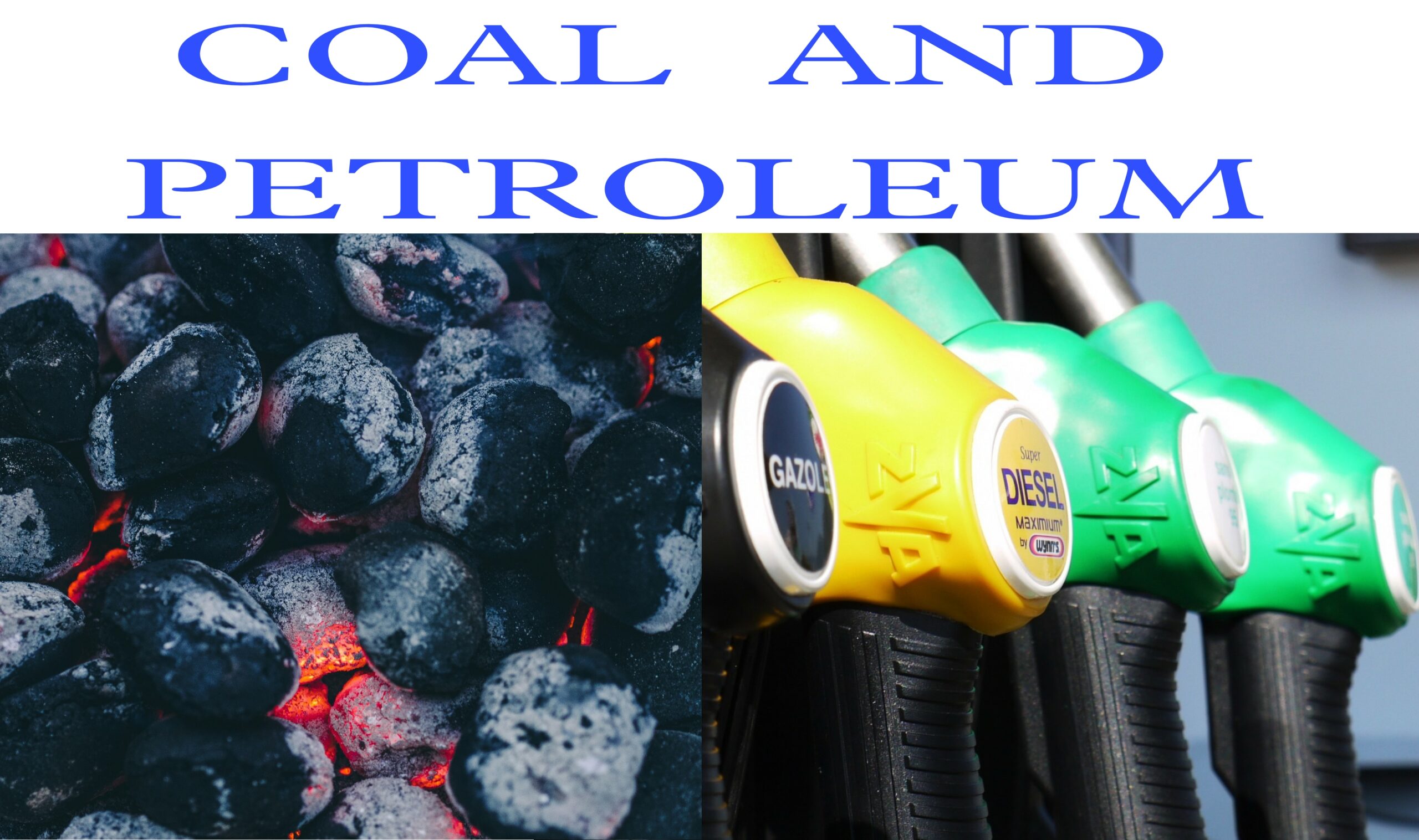JKBOSE NCERT Solutions For Class 8th Science Chapter 2 Coal and Petroleum
Read Notes on Coal and Petroleum
Q 1. What are the advantages of using CNG and LPG as fuels?
Answer
The following are the advantages of using CNG and LPG.
- These are easy to transport.
- These are cleaner fuels and are smokeless.
- Give maximum heat when brunt.
Q 2. Name the petroleum product used for surfacing of roads.
Answer
Bitumen a petroleum product is used for surfacing of roads.
Q 3. Describe how coal is formed from dead vegetation. What is this process called?
Answer
Millions of years ago low lying areas on earth were covered by dense forests. These forests got buried due to natural processes such as earthquakes and floods. Due to high compression the temperature and pressure under soil increased. Slowly these dead plants converted to coal.
This slow process of conversion of dead vegetation into coal is called carbonisation.
Q 4. Fill in the blanks:
(a) Fossil fuels are …………, …………. and ………….
(b) Separation of different constituents from petroleum is called …………
(c) Least polluting fuel for vehicle is…………….
Answer
(a) coal , petroleum and natural gas.
(b) refining
(c) CNG.
Q 5. Tick True/False against the following statements:
(a) Fossil fuels can be made in the laboratory. (T/F)
(b) CNG is a more polluting fuel than petrol. (T/F)
(c) Coke is almost pure form of carbon. (T/F)
(d) Coal tar is a mixture of various substances. (T/F)
(e) Kerosene is not a fossil fuel. (T/F)
Answer
(a) F
(b) F
(c) T
(d) T
(e) F
Q 6. Expalin why fossil fuels are exhaustible natural resources?
Answer
Fossil fuels are limited in quantitity and are likely to get exhausted by continuous use by humans.
Q 7. Describe characeristics and uses of coke.
Answer
Coke is a black and porous substance. It is almost a pure form of carbon. It is used for manufacturing steel and for extraction of many metals.
Q 8. Explain the process of formation of petroleum.
Answer
Petroleum was formed from organisms living in the sea. After death the dead bodies of animals settled at the bottom of sea and got covered by sand and clay. These dead bodies were transformed into petroleum over millions of years due to absence of oxygen and under high pressure and temperature.
Q9. The following table shows the total power shortage in India from 1991-1997. Show the data in the form of a graph. Plot shortage percentage for the years on the Y-axis and the years on X-axis.
| S.No | Year | Shortage (%) |
| 1 | 1991 | 7.9 |
| 2 | 1992 | 7.8 |
| 3 | 1993 | 8.3 |
| 4 | 1994 | 7.4 |
| 5 | 1995 | 7.1 |
| 6 | 1996 | 9.2 |
| 7 | 1997 | 11.5 |
Answer

Q 10. What are exhaustible natural resources?Give examples.
Answer:
The amount of these resurces is limited in nature and they get exhausted by human use. For instance forests, wild life, minerals etc are exhaustible natural resources.
Q 11. What are inexhaustible natural resources?Give examples.
The resources which are unlimited in quantity and do not get exhausted by use.For example sunlight and air.
Q 12. Why is natural gas called a clean fuel?
Answer
Natural gas is a clean fuel because it is smokeless.
Q 13. What are the uses of coal?
Answer
Following are the uses of coal.
- Coal is used as a fuel in homes for cooking and heating.
- Coal is used in industries as fuel.
- Coal is used to generate thermal electricity.
- Many other useful products are made when coal is processed.
- In earlier times coal was used in steam engines of railways.

